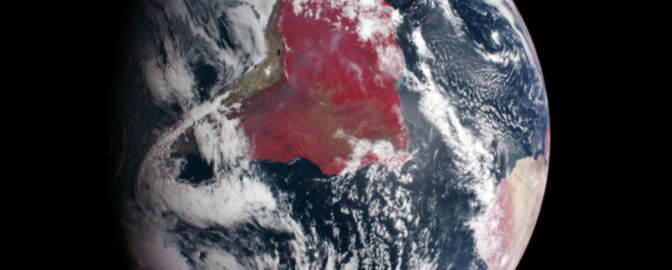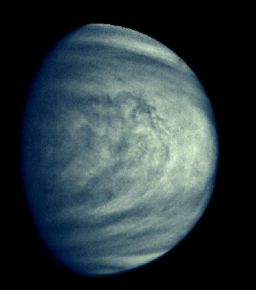Venus looks more boring than you think it does

Written by
Emily Lakdawalla
September 21, 2009
The MESSENGER team posts one captioned image per week from their previous encounters. These have mostly been of Mercury but once in a while they toss in an image from one of their two Venus encounters, which happened on October 24, 2006 and June 5, 2007. Today's was this view revealing Venusian cloud features. It's a bit unusual in that genre, because most of the time when you see a picture of Venus with cloud features, it was taken through an ultraviolet filter; the clouds are streaked with some as-yet-unknown "UV absorber" that really makes their shapes pop. This image, by contrast, was taken through a red filter; it's a testament to the fine quality of MESSENGER's camera that so much detail is visible at this wavelength.

NASA / JHUAPL / CIW
Venus cloud features from MESSENGER
MESSENGER captured this view of the planet Venus on approach to its second flyby on June 5, 2008. The contrast in the image, which was taken through a narrow-band filter centered at 630 nanometers (red), has been stretched to bring out subtle cloud features.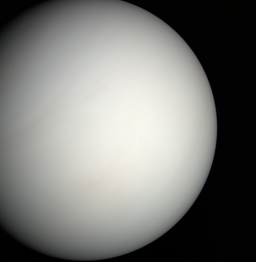
NASA / JHUAPL / CIW / color composite by Gordan Ugarkovic
Venus in natural color from MESSENGER
This view of Venus was composed of images taken through red, green, and blue filters by MESSENGER on June 5, 2007 as it approached for its second flyby. Seen in natural color, Venus is nearly as featureless as a cue ball.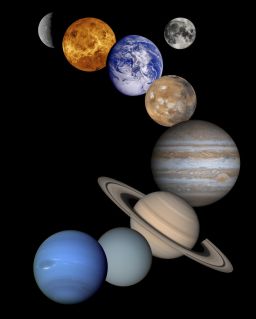
NASA / JPL
Home page image of JPL's Planetary Photojournal, 2001
A montage of the planets dating from March 29, 2001. (Pluto is not included not because it wasn't considered a planet then, but because the image is from the Jet Propulsion Laboratory's Planetary Photojournal, a site for the distribution of JPL missions' photos of the planets. There had been no missions to Pluto.)So if you're going to make your own planet montage, avoid the Magellan images, and avoid the equally garish Pioneer and Galileo ultraviolet-filter views like this one.
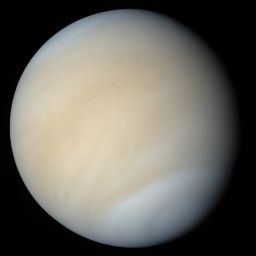
© 2005 Mattias Malmer, from NASA/JPL data
Venus from Mariner 10
This view is processed from 78 Mariner 10 frames captured through orange and ultraviolet filters. It is intended to look approximately natural in color, though the use of the ultraviolet images makes cloud patterns more visible than they would be to the human eye. Processed by amateur Mattias Malmer.Processing details: 78 frames in the FDS 58870-59038 range.
V and Orange filters.
olor is combination of the filers
ed= Orange
reen= 0.8*red+0.2*UV
lue= 0.5*orange+0.5*UV
Also added extra detail by adding the difference between uv and orange to the image. (almost the same as doing unsharp masking but with more predictable results.)
Support our core enterprises
Your gift today will go far to help us close out the year strong and keep up our momentum in 2026.
Donate

 Explore Worlds
Explore Worlds Find Life
Find Life Defend Earth
Defend Earth